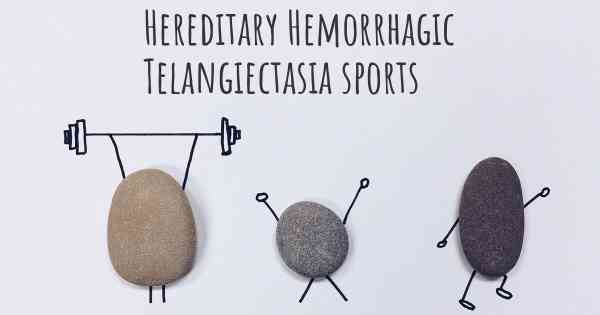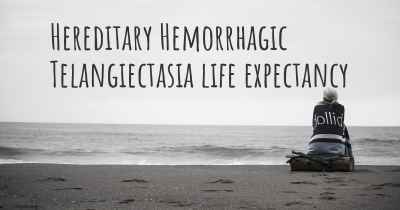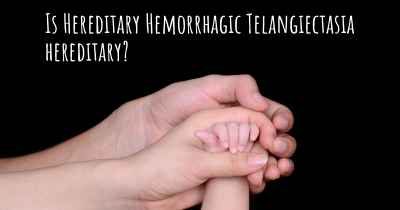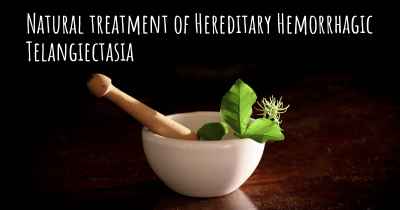Is it advisable to do exercise when affected by Hereditary Hemorrhagic Telangiectasia? Which activities would you suggest and how intense should they be?
See if it is advisable for people with Hereditary Hemorrhagic Telangiectasia to practice sports and which ones are the most recommended if you have Hereditary Hemorrhagic Telangiectasia

Is it advisable to do exercise when affected by Hereditary Hemorrhagic Telangiectasia?
Hereditary Hemorrhagic Telangiectasia (HHT), also known as Osler-Weber-Rendu syndrome, is a genetic disorder that affects blood vessels, causing abnormal connections between arteries and veins. These abnormal blood vessels, called telangiectasias, are fragile and prone to bleeding. Given the nature of this condition, it is important to approach exercise with caution.
Benefits of Exercise
Regular exercise has numerous benefits for overall health and well-being. It can improve cardiovascular fitness, strengthen muscles, enhance mood, and boost energy levels. However, individuals with HHT need to be mindful of the potential risks associated with exercise due to the fragile blood vessels.
Consultation with a Healthcare Professional
Before starting any exercise program, it is crucial to consult with a healthcare professional who is familiar with your specific condition. They can provide personalized advice based on your individual circumstances and medical history. They may also refer you to a specialist, such as a hematologist or a geneticist, who can offer further guidance.
Low-Impact Exercises
For individuals with HHT, low-impact exercises are generally recommended to minimize the risk of injury or bleeding. These exercises put less stress on the blood vessels and joints, reducing the likelihood of complications. Some suitable low-impact exercises include:
- Walking: Walking is a gentle form of exercise that can be easily adapted to your fitness level. Start with shorter distances and gradually increase the duration and intensity.
- Swimming: Swimming is a great option as it provides a full-body workout without putting excessive strain on the blood vessels. However, be cautious of any open wounds or bleeding.
- Cycling: Cycling is a low-impact exercise that can be done indoors on a stationary bike or outdoors. Adjust the intensity and duration based on your comfort level.
- Yoga or Pilates: These activities focus on flexibility, balance, and core strength. Choose modified poses and avoid any movements that strain the blood vessels.
Intensity and Duration
The intensity and duration of exercise should be tailored to your individual capabilities and tolerance. It is important to start slowly and gradually increase the intensity over time. Listen to your body and be mindful of any signs of strain or discomfort.
It is generally recommended to aim for at least 150 minutes of moderate-intensity aerobic exercise per week, spread out over several days. However, this may vary depending on your overall health, symptoms, and any other medical conditions you may have.
Precautions and Safety Measures
While exercise can be beneficial, it is essential to take certain precautions and safety measures when you have HHT:
- Avoid high-impact activities: Activities that involve jumping, running, or sudden movements should be avoided as they can increase the risk of bleeding or injury.
- Stay hydrated: Proper hydration is important to maintain blood volume and prevent dehydration, which can exacerbate symptoms.
- Wear protective gear: If participating in activities such as cycling or skating, wear appropriate protective gear to minimize the risk of injury.
- Monitor for symptoms: Pay attention to any signs of bleeding, shortness of breath, dizziness, or chest pain during or after exercise. If these symptoms occur, stop exercising and seek medical attention.
Conclusion
While exercise can be beneficial for individuals with Hereditary Hemorrhagic Telangiectasia, it is crucial to approach it with caution. Consultation with a healthcare professional is essential to determine the most suitable exercises and intensity for your specific condition. Low-impact exercises, such as walking, swimming, cycling, and yoga, are generally recommended. Start slowly, listen to your body, and take necessary precautions to ensure your safety while exercising.
Others must see it with your physician according to your condition
Posted Mar 9, 2017 by Rosario Figueroa 2770








